You must log in or register to do the quizzes, complete the course and receive a certificate.
2.3. Grab your spade: regenerative farming in action
The most important starting point for regenerative farming is for farmers to know their fields. It’s a good idea to start by mapping the water management, compactions and soil characteristics of each field. However, soil monitoring does not stop there. Plots should be regularly examined and monitored for any changes. And not only from the cab of a tractor. A shovel is an important tool for the regenerative farmer.
Let’s delve further into this topic by looking at some examples of how farmers can monitor the condition of their fields. At the same time, you will be able to test how familiar you are with the basic characteristics of fields.
Easy ways to get acquainted with the soil
Have you heard of the worm test? Maybe not, but counting worms is a good habit for farmers to get into. Can you guess what the number of worms says about a field and how many worms a healthy field should have?
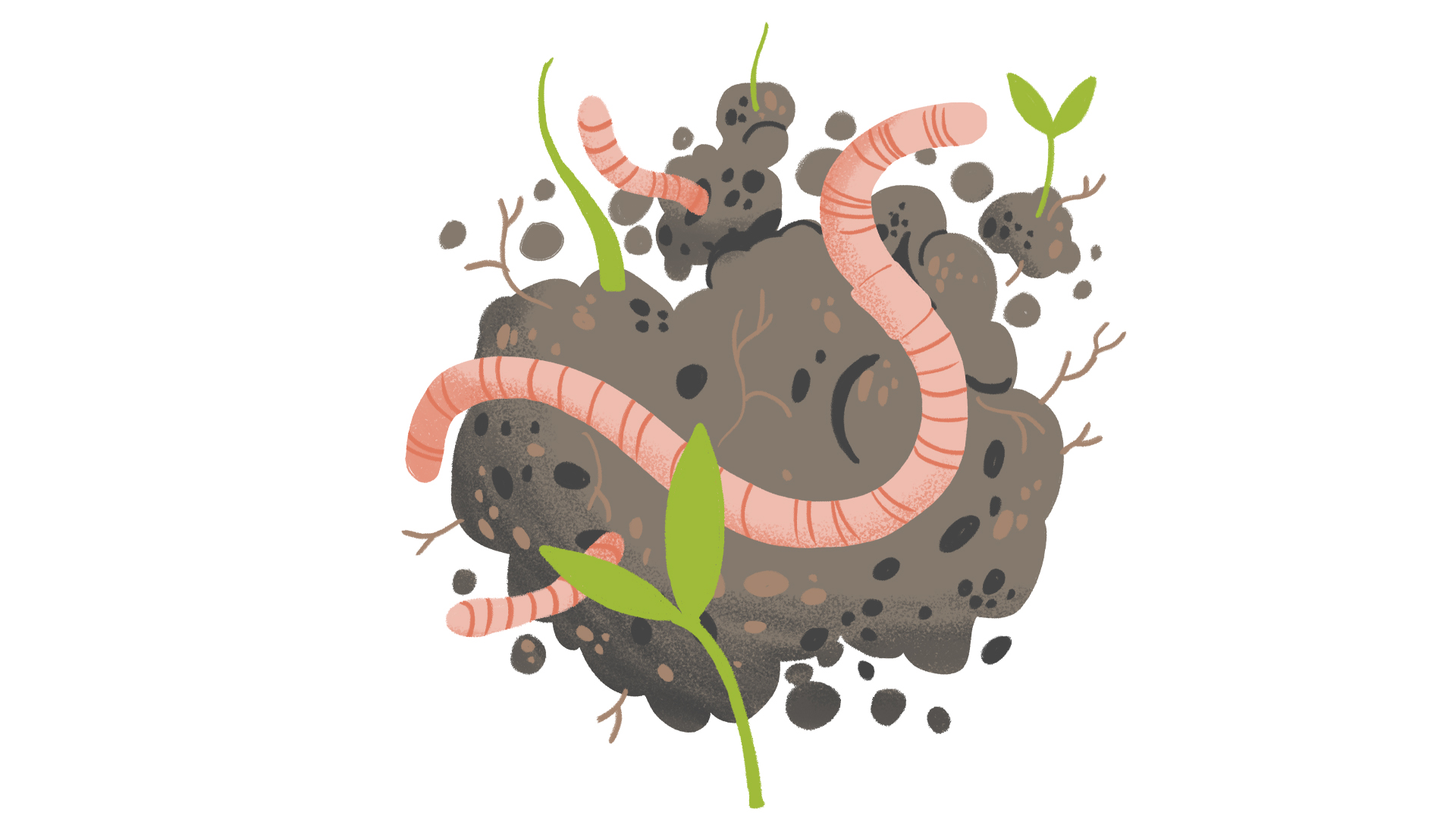
Worms are a great indicator of soil health, as they indicate the amount of organic matter in the soil.
We recommend doing this test when worms are active. You can be satisfied with the result if you find four worms wriggling on your shovel.
One way to check the soil is by examining its structure. Which hand do you think is holding a soil sample that would be considered a sign of healthy soil?

The soil’s crumb structure tells us a lot about its health.
The roundness, small size and porosity of the crumbs in the left-hand sample are usually good signs. The rough, dense, smooth-surfaced crumbs indicate soil with a poorer structure and less humus.
This may be a slightly less typical way of monitoring your fields, but if cotton underpants buried in a field look like this after a few weeks, is it good or bad sign?

It’s really good!
This indicates an abundance of active soil organisms. The more actively soil organisms break down organic matter, such as the cotton in these underpants, the more functional the soil ecosystem is. So, underpants full of holes are something to be delighted about (at least in this case).
Regenerative farming methods
Once the basic characteristics of your fields are in order, you can really get down to work. Next, let’s look at four examples of the most common methods used in regenerative farming.
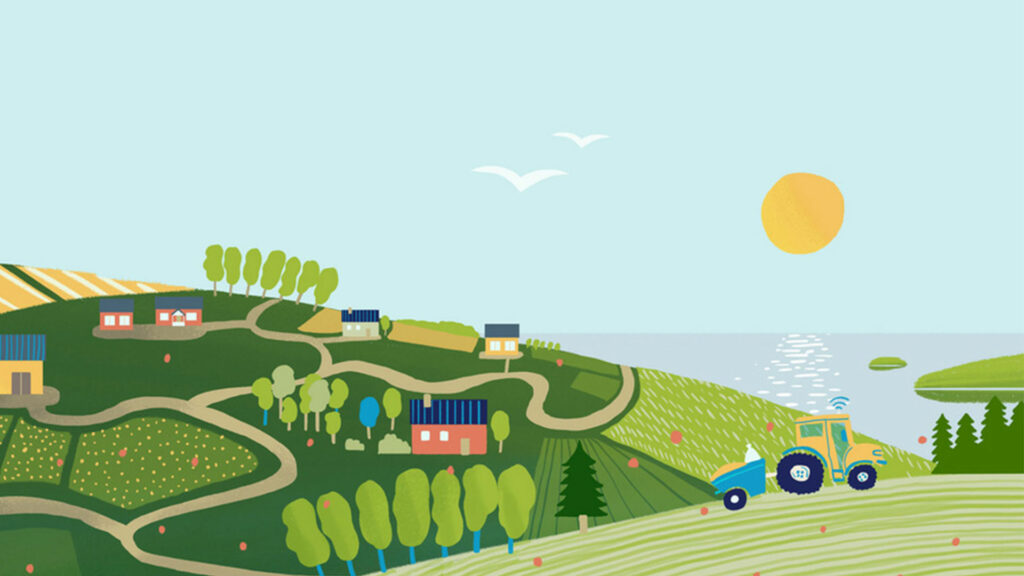
Keep the ground covered
Catch and cover crops may be the easiest and most affordable way to transition towards regenerative farming. These plants are not used as an additional cash crop, and are cultivated either at the same time as the actual crop or after the harvest.

Maximise the assortment and diversity of crops
Crop rotation means that annual crops, perennial crops and crops belonging to various genera are cultivated as diversely as possible, and the same plant is not grown in the same plot in consecutive years.
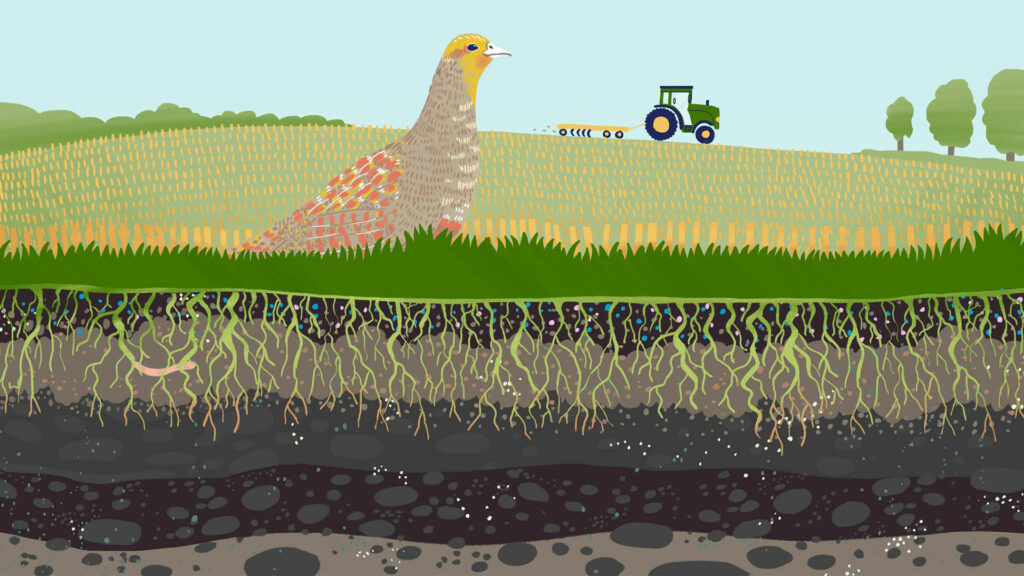
Minimise soil disturbance
The soil should only be tilled when necessary and at the right time. Large machinery has no place in wet fields. If possible, tillage should be limited to the surface layer of the soil and timed so that new plant cover can be established soon after tillage.
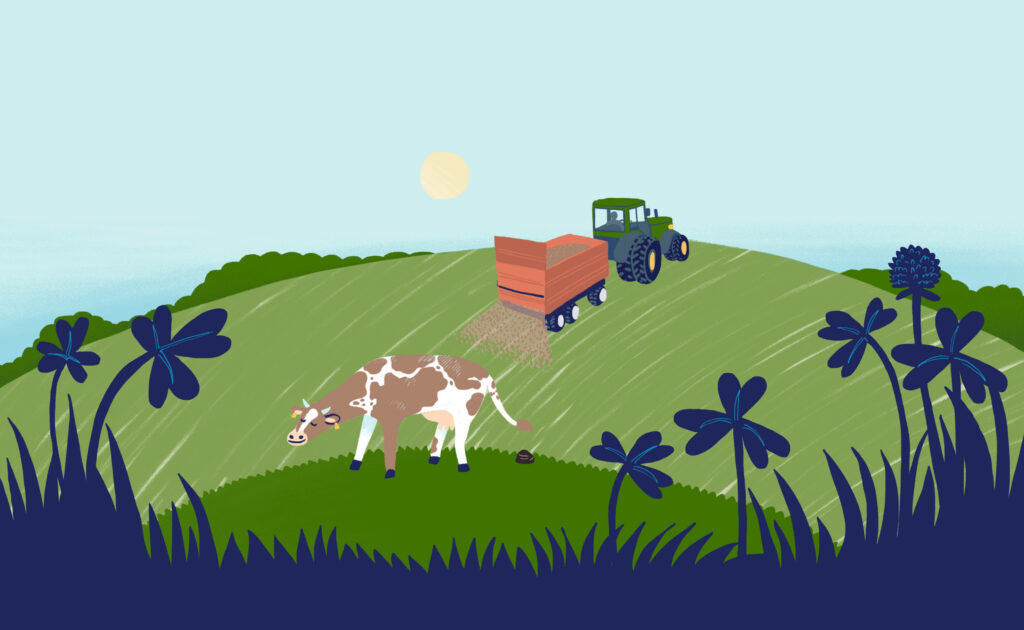
Include livestock in the package
This can also be done on crop farms, as they can cooperate with livestock farms in areas such as grass cultivation, manure spreading and grazing. Adding grass and organic matter provides soil organisms with nutrients and good living conditions.
You may have noticed that these are methods that many farmers have used throughout the ages. But what are the benefits? Before you read more about this topic, think back to the three principles of regenerative farming and consider the methods shown on the cards from their perspective. Each method promotes at least one of the three principles of regenerative farming, that is, more
1) photosynthesis
2) soil microbes
3) protection for the soil
Which principles do you think each of the methods on the cards could relate to? After you have thought about it, click on the button/headings to read more and get some insights from the farmers themselves.
More green weeks, why?
One of the most important activities in regenerative farming is to maintain as much plant cover as possible in your fields for as much of the year as possible. Plant cover can be promoted by, for example, adding grass to crop rotation, introducing perennial plants that are sown in the autumn, and using catch and cover crops.
- Photosynthesis, and therefore also carbon storage in the soil, willcontinue after the harvest.
- Vegetative cover keeps the soil in place and thereby reduces erosion and the leaching of nutrients into waterways.
- Pollinator numbers can be increased by selecting flowering catch and cover crops.
It’s now time to hear from our farmers. Tuomas Näppilä from Kestilä Farm tells us why it’s important to take care of the soil by, for example, using plant cover:
The benefits of a diverse range of crops
One important way to improve soil health and nutrient circulation is to diversify the range of plants being grown. This can be done by diversifying crop rotation or by using catch and cover crops. It is a good idea to include deep-rooted plants in crop rotation, as they improve the structure of the soil. Diverse plant residues also promote diversity in soil microbiota, which in turn improves soil structure. As the soil’s pore structure improves, it provides more protection for organisms.
When we wanted to start diversifying our undersow mixtures, we had to think about how we could use plants that would not be removed by plant protection agents. We ended up resowing after carrying out our plant protection procedures. Now we’ll see how it works and then adjust things as necessary next year. New issues will always arise, so you just have to keep fine-tuning. And this is indeed the path we’ve taken.
Sirkku Puumala, farmer, Verkatakkila Farm, Vihti
The disadvantages of tilling
Tilling the ground will always disturb the soil and reduce the protection that it provides for microbes. Improper or poorly timed tillage will cause compactions and increase erosion. No general rules can be set for the correct amount of tilling. How much tillage the soil requires depends on factors such as the soil type, the weed status, soil frost and the soil organisms. So it’s worth carefully weighing up the need for tillage. Well-thought-out and properly timed tilling can already go a long way.
In the video, you will learn about the results of reducing tillage on Ilpo Markkola’s farm in Hämeenkyrö.
Livestock support crop farming
Regenerative farming aims to reduce the use of mineral fertilisers, and instead favours the use of recycled fertilisers and soil improvement products of plant and animal origin. This includes manure, biogas digestates and plant residues. When manure is spread at the right time and in an appropriate manner, it improves the soil’s crumb structure making it airier and better at retaining water. Grazing also increases the biodiversity of microbiota, and thereby biodiversity in both the soil and surrounding nature as well.
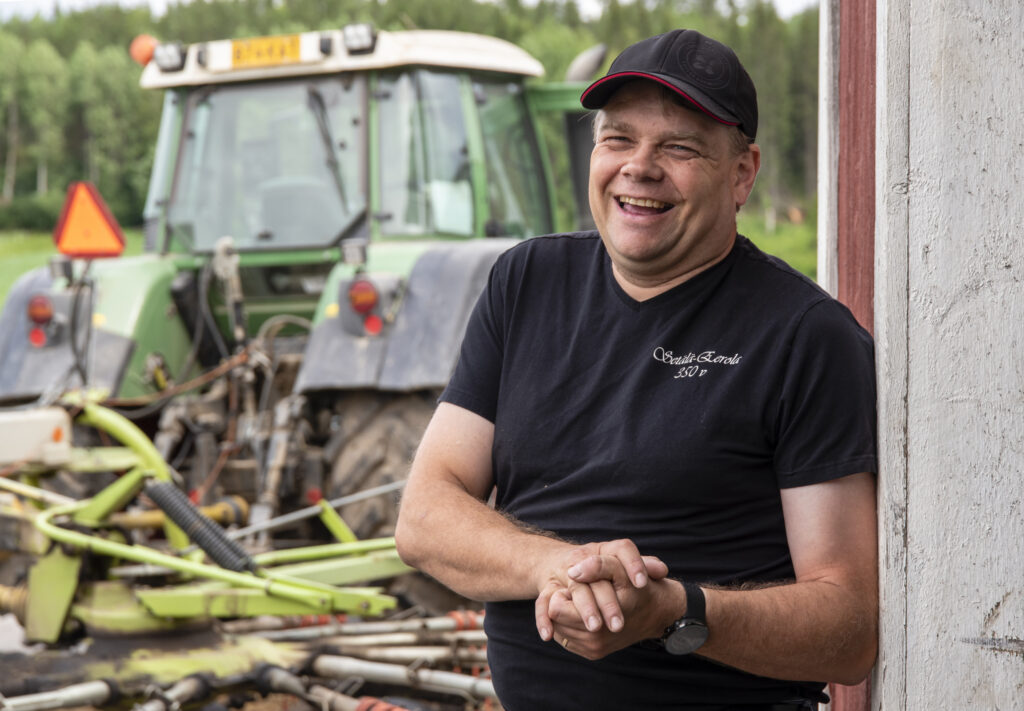
In regenerative farming, crop cultivation and animal husbandry live in a symbiosis in which animal-derived nutrients are recycled as fertiliser – and this is remarkably beneficial. Arable land that has healthy soil provides a buffer while maintaining yield capacity. This significantly reduces the need for chemical inputs, thereby improving the performance of the entire food chain in crisis conditions.
Jari Eerola, farmer, Setälä-Eerola Farm, Tuulos
When you look at the benefits of the example methods, you may find that many of them support more than one of the three principles of regenerative farming. If not directly, then at least indirectly. Regenerative farming is a whole in which individual actions have diverse effects, and when different actions are combined, the benefits multiply.
In addition to the above, the regenerative farmer’s toolkit includes – depending on the circumstances – agroforestry practices, paludiculture (which is highly suited to peatlands), and favouring diverse perennial vegetation in field environments.
The criteria for regenerative farming
The criteria for regenerative farming will help farmers and companies understand the boundary conditions for its activities. The creator of this course, BSAG, developed the criteria for regenerative farming in collaboration with companies, scientists and farmers in the Carbon Action platform with the aim of obtaining practical tools to monitor the action and developments initiated by farmers.
BSAG’s criteria for regenerative farming seek to promote agricultural practices that improve soil health and increase carbon storage in the soil. The criteria are based on the fundamental principles of regenerative farming and life-long learning for farmers. The criteria should always be adjusted to suit different production sectors and geographic areas.
- Competence and operations are continuously developed
- The soil health of arable land is improved and maintained in a goal-oriented manner
- Biodiversity is systematically improved both above and below ground level
- Crop rotation is diverse
- Thriving vegetative cover is maximised and maintained throughout the year
- Tillage is minimised
- Nutrient use is based on the needs of the plants and relies on organic fertilisers and biological nitrogen fixation
- The use of plant protection products is minimised
Regenerative farming is a collection of methods, and there is no one recipe that works for every field. Each farmer must select the appropriate activities for their own farm and its individual plots. They will depend on both the farm and the situation. For example, the soil type, the crops to be grown and the season’s weather conditions will all influence a farmer’s choices.
If you want, you can download BSAG’s criteria for regenerative farming
You have now finished the material in lesson 2., except for the quiz in topic 2.3. and the final test of the lesson. Let’s move on to the quiz below.
This course is based in the E-college for Regenerative Farming, which you can find at bsag.fi/en/the-e-college-for-regenerative-farming/. See lessons 1, 2, 5, 6, 7, 8 and 11 of the E-college’s course for more information about the topics in this lesson.
